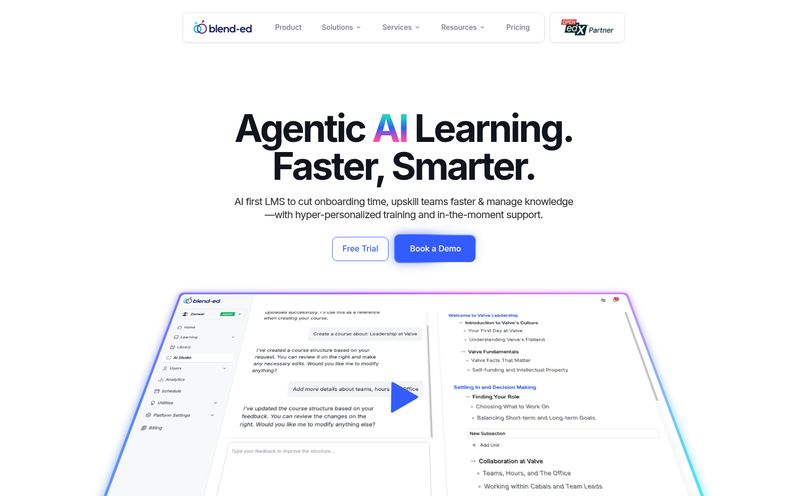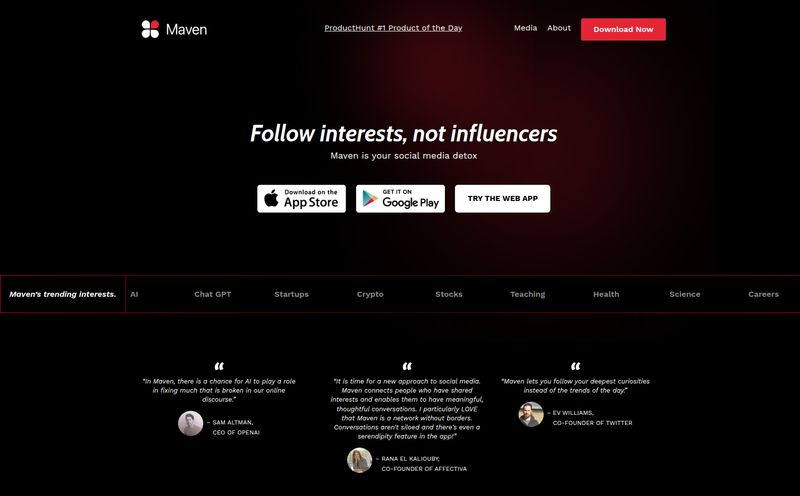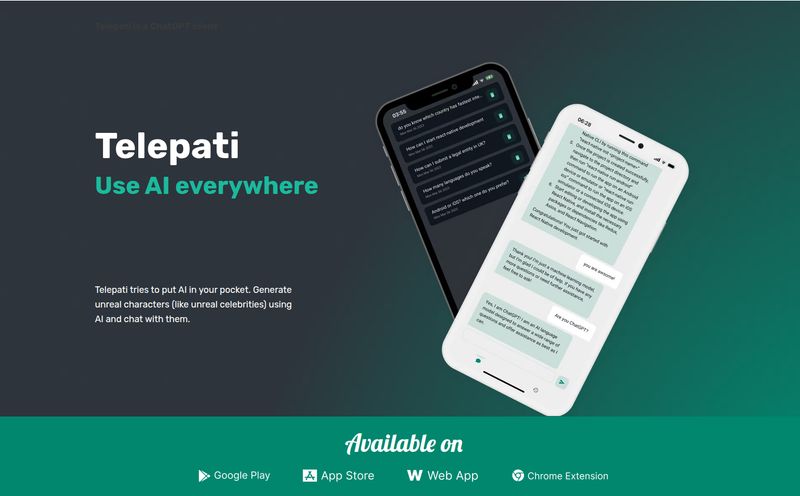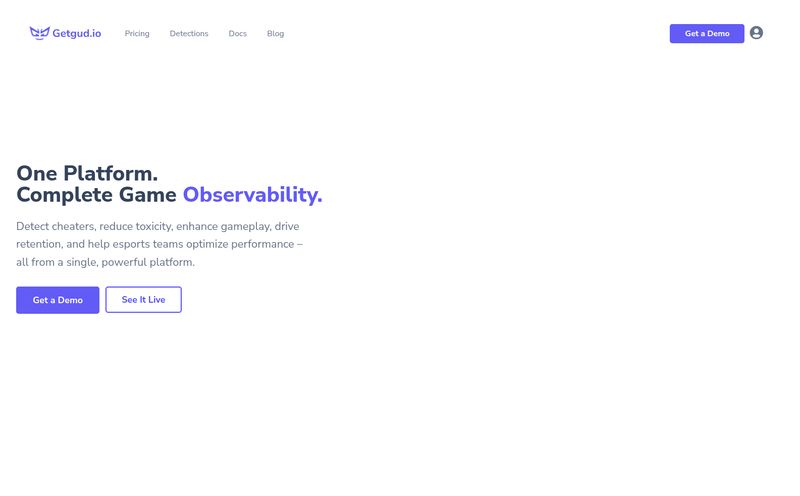We've all been there. You land on a website, you have a simple question, and you're met with the dreaded chatbot from 2015. You know the one—it only understands three pre-programmed questions, and if you deviate even slightly, it just repeats, "I'm sorry, I don't understand." It’s about as helpful as a screen door on a submarine.
For years, I've seen clients lose leads and frustrate customers because their support couldn't keep up. They were either drowning in emails or using a bot that created more problems than it solved. So when a tool like ChatNode comes along, promising to let you build an AI assistant trained on your own data, my professional curiosity gets piqued. Is this just another piece of shiny tech, or is it a genuine solution for overwhelmed teams and impatient website visitors?
I decided to get my hands dirty and find out. This isn't going to be a simple regurgitation of their features list. This is my take as someone who lives and breathes traffic, conversions, and user experience.
So, What Exactly is ChatNode?
Okay, let's cut through the marketing jargon. ChatNode is a platform that lets you create a custom AI chatbot. The magic trick here isn't the bot itself, but what you feed it. Instead of some generic knowledge base, you train it on your company's specific information.
Think of it like this: you're hiring a new support agent. But instead of a week-long onboarding, you hand them your entire library of product manuals, blog posts, FAQs, and internal documents. And they read and understand it all. Instantly. That's ChatNode. You can feed it PDFs, text files, or even just point it to URLs on your website, and it absorbs that information to answer user questions accurately.
This means it can handle questions like, "What is your return policy for items bought on sale?" or "How does feature X compare to feature Y?" with actual, helpful answers pulled directly from your content. No more generic nonsense.
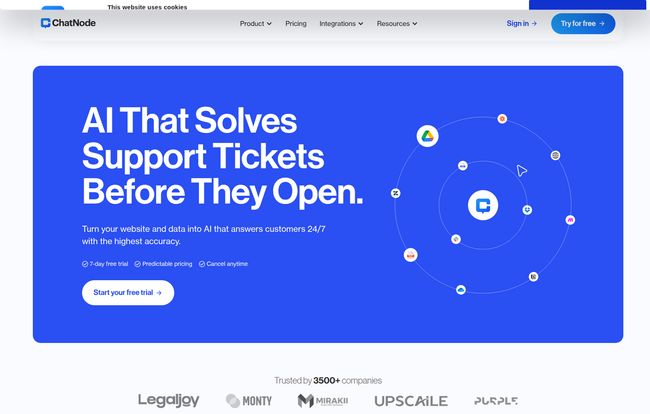
Visit ChatNode
First Impressions: Is the No-Code Setup a Myth?
Every SaaS tool on the planet claims to have a "no-code" setup. Most of the time, that’s a half-truth. You start clicking around and before you know it, you’re staring at a screen asking for an API key you've never heard of.
I was pleasantly surprised with ChatNode. Getting started was genuinely straightforward. You create a chatbot, give it a name, and then you're presented with the data sources screen. I tested it by uploading a fairly dense PDF guide I wrote about local SEO and also gave it the URL to my blog's main page. The system processed it all in a couple of minutes. From there, you can tweak the base prompt—stuff like its personality, its name, and a starting message. Pretty painless, I have to admit.
You can then embed this little guy on your website with a simple snippet of code (if you can handle Google Analytics, you can handle this) or even integrate it into your team's Slack for internal questions. That last part is a neat idea; creating an internal knowledge bot so your team isn't constantly bugging each other for information.
The Features That Actually Move the Needle
A lot of platforms throw a million features at you, but only a few really matter in the day-to-day. Here's what stood out to me.
Training Your Bot's Brain
The core of ChatNode is its data training, and it works well. The ability to mix and match sources is powerful. You can use your public-facing help docs, a few key blog posts, and an internal-only PDF about pricing structures all for the same bot. This creates a really well-rounded assistant. It also supports 95 languages, which is a massive plus for anyone with an international audience.
Putting Your AI to Work
Embedding the chatbot is standard fare, but the Slack integration is where things get interesting for me. Imagine your marketing team being able to ask a bot, "What were the main takeaways from the Q2 performance report?" and getting an instant summary because you fed the bot the report. That saves so. much. time. On higher-tier plans, you also get API access, which opens the door for all sorts of custom integrations if you have the developer resources.
Controlling the Conversation
One of my biggest pet peeves with AI tools is when they feel like a black box. ChatNode gives you a decent amount of control. You can customize the initial prompts to set the bot's tone—you could make it super professional or quirky and fun. For the real nerds (like me), the higher-tier plans let you choose the AI model, including the heavy-hitter GPT-4 from OpenAI or models from Claude. This is crucial because different models have different strengths, and having that choice is a sign of a mature platform.
Let's Talk Money: The Evolving ChatNode Pricing
Ah, pricing. The part of the review everyone scrolls down to. I've been watching ChatNode for a while, and I've seen their pricing structure change—which, by the way, is a totally normal sign for a company that's growing and figuring out its market. Here's the current breakdown as I see it on their site.
| Plan | Price | Best For |
|---|---|---|
| Lite | $39 / month | Solopreneurs, small blogs, or anyone wanting to test the waters with a single site. |
| Standard | $89 / month | Small businesses and growing websites that need more message capacity, GPT-4 access, and want to remove ChatNode branding. This feels like the sweet spot for many. |
| Scale | $377 / month | Larger companies or agencies managing multiple clients. You get a big jump in messages, more chatbots, and API access. |
| Enterprise | Custom | The big leagues. Custom needs, dedicated support, the whole nine yards. |
They also have a "Pay as you go" option and various add-ons, which is a smart move. My main critique? The message limits on the lower tiers could be a barrier. 2,000 messages on the Lite plan might sound like a lot, but for a moderately busy site, you could burn through that faster than you think. You have to be realistic about your traffic.
The Good, The Bad, and The... Well, The Reality
No tool is perfect. After poking around, here's my honest take. The big win for ChatNode is its simplicity and focus. It does one thing—create a chatbot from your data—and it does it really well. It’s a fantastic way to turn your existing content into an interactive, 24/7 support and lead-gen tool. The setup is a breeze, and for a custoemr-facing bot, it's miles ahead of the old, rigid options.
On the flip side, the pricing will be a consideration. While it's reasonably priced for the value it provides, it's not a free-for-all. A high-traffic site will need to jump to the Standard plan or higher to avoid hitting message caps. Also, the chat history is limited on the lower plans (e.g., only 3 days on an older Basic plan I saw), which could be a pain if you need to review past conversations. It's a classic SaaS trade-off: you pay for more power and retention.
So, Who Is This Actually For?
I see a few clear winners here. SaaS companies with extensive documentation can create a killer support bot. Content creators and educators can build a bot that helps users navigate their courses or archives. I could even see a real estate agency training a bot on all their listings to answer specific client questions instantly.
If you're a small business owner tired of answering the same ten questions every single day via email, this could be a game-changer. It automates the repetitive stuff so you can focus on the customers who actually need a human touch.
My Final Verdict on ChatNode
So, is ChatNode worth it? In my opinion, yes—for the right person. If you're looking for a simple, powerful way to leverage the content you've already created, it's a fantastic tool. It bridges the gap between having no support bot and needing a hugely complex, enterprise-level system.
It's not the cheapest option on the block, especially if your volume is high, but it solves a very real, very annoying problem. It turns your static website into an interactive resource, which is great for user engagement, SEO signals, and your own sanity. It's a solid contender in the AI chatbot space, and one I'll definitely be keeping an eye on.
Frequently Asked Questions
- Can ChatNode pass a conversation to a human agent?
- Yes, according to their FAQ, there is an option to connect the chatbot to a live agent or have it escalate to a human when it can't answer a question. This is a critical feature for a good user experience.
- What kind of data can I train my ChatNode bot on?
- You can use a variety of sources, including uploading text files, PDFs, or just providing website URLs for it to crawl. This flexibility is one of its main strengths.
- Is ChatNode difficult to set up for a non-technical person?
- No, not at all. The interface is clean and the process is guided. If you can copy and paste a small piece of code onto your website, you have all the technical skills you need to get it running.
- Do I need my own OpenAI API key to use ChatNode?
- On the older plans, bringing your own OpenAI key was a feature of the Pro plan. On the new pricing, the higher-tier plans like Standard and Scale include access to advanced models like GPT-4, so you don't necessarily need to bring your own key unless you have a specific reason or a custom setup in mind.
- How does the message limit work?
- Each plan comes with a monthly message allowance (e.g., 2,000 messages on the Lite plan). A "message" is typically counted as one response from the chatbot. If you exceed your limit, you can usually upgrade or purchase extra message credits.
